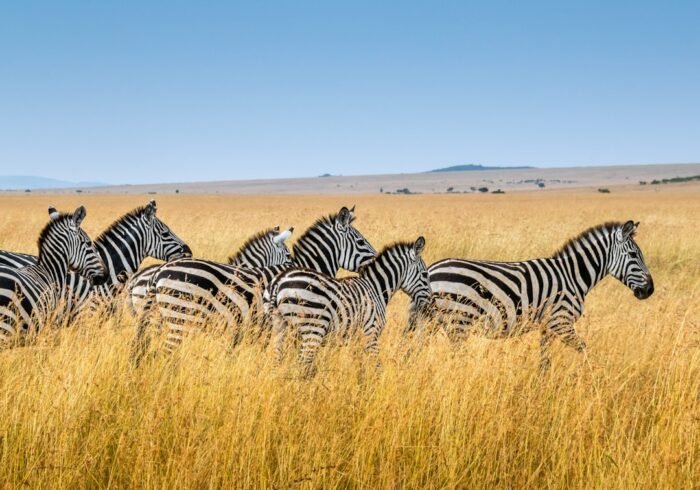The Endangering Future of Cheetahs Despite their exceptional speed and agility, cheetah populations are alarmingly declining nationwide. The International Union for Conservation of Nature (IUCN) has designated these magnificent big cats as vulnerable after they were once widely distributed throughout Africa and parts of Asia. Human-wildlife conflict, poaching, and habitat loss are the main threats to their survival. Cheetahs are pushed into smaller areas as a result of growing human populations and agricultural practices that invade natural habitats. This not only reduces their hunting areas but also makes them more competitive with other predators.
Key Takeaways
- Cheetahs are facing a serious threat to their survival due to habitat loss, human-wildlife conflict, and poaching.
- Conservation efforts in the wild focus on protecting cheetah populations in their natural habitat through monitoring, research, and anti-poaching measures.
- Captive breeding programs play a crucial role in maintaining genetic diversity and providing a potential source for reintroduction into the wild.
- Community involvement in conservation is essential for promoting coexistence between humans and cheetahs, and for addressing the root causes of conflict.
- Anti-poaching measures, such as increased law enforcement and community education, are vital for reducing the illegal trade in cheetahs and their parts.
Also, the illegal wildlife trade puts cheetah populations at serious risk. Cheetah cubs are becoming less common in the wild as a result of their frequent capture & sale as exotic pets. Demand in different markets, where the appeal of owning a cheetah as a status symbol outweighs the moral ramifications of such behavior, is what drives this trade.
Conflicts between cheetahs and farmers also intensify as livestock farming grows in popularity. The decline of this iconic species is further exacerbated by farmers frequently using deadly methods to protect their livestock. These elements work together to put cheetahs in a vulnerable position, making immediate conservation measures necessary to guarantee their survival. Conservation Initiatives in the Wild Several conservation projects have been started in cheetahs’ natural habitats in response to the urgent threats they face.
Wildlife conservation organizations are putting in endless effort to put policies into place that encourage cheetahs and humans to live together. Teaching the local population about the value of cheetahs and their contribution to the upkeep of thriving ecosystems is one such strategy. These programs seek to lessen conflict between people and wildlife and promote conservation efforts for these magnificent creatures by motivating local communities to take responsibility for their environment.
| Conservation Effort | Location | Impact |
|---|---|---|
| Cheetah Conservation Fund | Namibia | Research, education, and conservation programs |
| Save the Cheetah | Botswana | Community-based conservation initiatives |
| Iranian Cheetah Society | Iran | Efforts to protect the critically endangered Asiatic cheetah |
Also, cheetahs now have safe havens thanks to the establishment of wildlife reserves and protected areas. These places are crucial breeding grounds in addition to providing protection from habitat degradation and poaching. Cheetah populations in these reserves are being actively monitored by conservationists, who use tracking technologies to collect information on the animals’ whereabouts and habits. Understanding their requirements and creating efficient management strategies that can improve their chances of surviving in the wild depend on this information.
Captive Breeding Initiatives Although conservation efforts to preserve cheetahs in their natural environments are vital, captive breeding initiatives have become an important part of conservation plans. By increasing the genetic diversity of cheetah populations, these initiatives hope to protect individuals who might not be able to survive in the wild because of a variety of threats. Globally, zoos & wildlife refuges have set up breeding initiatives aimed at producing cheetah populations that are robust and genetically varied. In addition to increasing population size, captive breeding provides a platform for education about the difficulties cheetahs face. Numerous establishments conduct outreach initiatives to educate guests about the suffering of these creatures and the significance of conservation initiatives. Through cultivating a relationship between humans & wildlife, these initiatives motivate people to take action in favor of cheetah conservation.
Reintroduction programs, in which healthy individuals are returned to their natural habitats, can also result from successful breeding efforts, aiding in the recovery of wild populations. Community Involvement in Conservation Effective cheetah conservation initiatives are based on community involvement. Involving local people in conservation efforts gives them a sense of empowerment and encourages them to take pride in their natural resources. Numerous organizations now understand that conservation of wildlife and sustainable practices can coexist, resulting in creative solutions that benefit cheetahs and people alike.
For example, ecotourism initiatives can offer financial rewards to communities that preserve wildlife instead of taking advantage of it. Along with the financial gains, community-based conservation programs frequently incorporate educational elements that inform residents of the cheetahs’ ecological importance and place in the ecosystem. Through workshops & training sessions, community members can gain knowledge about wildlife monitoring and habitat restoration, empowering them to take an active role in conservation initiatives. These projects foster a cooperative strategy that raises the likelihood of cheetah populations’ long-term success by forging solid alliances between local communities and conservationists. Anti-Poaching Measures Preserving cheetahs requires a strong anti-poaching strategy.
Due to the removal of important predators from the food chain, poaching not only endangers individual animals but also disturbs entire ecosystems. Several anti-poaching initiatives have been put in place in cheetah habitats to address this problem. To prevent poachers from entering these crucial habitats, these measures frequently entail heightened patrols and surveillance of protected areas.
Modern anti-poaching tactics heavily rely on technology in addition to physical patrols. Large tracts of land can be monitored by drones fitted with cameras, which can provide real-time information on possible poaching activity. Also, anti-poaching operations are more effective when local law enforcement agencies collaborate with them. In addition to giving rangers and community members more authority, teaching them anti-poaching techniques also makes them feel more accountable for preserving wildlife.
Conservationists seek to improve the safety of cheetahs and other endangered species by tackling the underlying causes of poaching and putting comprehensive strategies into place. Protection of Cheetah Habitats Preserving cheetahs’ natural communities is essential to their survival. Loss of habitat is still one of the biggest threats to these big cats as human activity continues to invade these ecosystems. By creating protected areas that include vital cheetah habitats, conservationists are making sure that the animals have enough food & room to roam. Without the stresses of human interference, cheetahs can flourish in these protected areas, which act as havens. Also, in areas where ecosystems have been weakened by urbanization or agricultural growth, habitat restoration initiatives are being started.
Cheetahs and numerous other species that share their habitat gain from the rehabilitation of these areas. Conservationists hope to improve connectivity between fragmented habitats by reestablishing native vegetation and establishing wildlife corridors, which will enable cheetahs to roam freely & sustain healthy populations. A comprehensive strategy for cheetah conservation must include habitat restoration and protection. International Collaboration in Cheetah Conservation Because cheetahs are migratory animals and face transboundary challenges, their conservation is not just a national issue; it necessitates international collaboration.
Numerous governments and organizations have realized that tackling problems like habitat loss, poaching, and genetic diversity within cheetah populations requires coordinated efforts. Countries that share cheetah habitats can work together more easily thanks to international treaties and agreements, which allow them to create coordinated conservation plans. Workshops and conferences bring together specialists from various areas to exchange best practices and knowledge regarding cheetah conservation.
These meetings promote discussion of important topics & the sharing of creative concepts that can be applied internationally. Countries can improve their ability to effectively protect cheetahs by combining their resources and expertise. Global cooperation not only improves conservation initiatives but also increases public awareness of these amazing animals’ predicament. The Future of Cheetah Conservation The conservation of cheetahs depends on the sustained dedication of individuals, communities, organizations, and governments. There is hope for creative solutions to ensure the survival of these iconic big cats as awareness of their struggles grows.
Potential approaches to population monitoring and reducing conflict between humans and wildlife are provided by the incorporation of technology into conservation activities. For example, researchers can now collect priceless information on the behavior and movement patterns of cheetahs thanks to developments in tracking devices. Long-term success also depends on cultivating a conservation culture in the next generation. By highlighting the value of biodiversity and wildlife conservation, educational initiatives can motivate future leaders to support sustainable practices that benefit both people & wildlife. A new generation of conservationists committed to protecting the cheetah’s legacy for future generations can be produced by society by fostering in young people a sense of responsibility towards the environment.
In conclusion, even though there are many obstacles in the way of cheetah conservation, coordinated efforts on a number of fronts—from community engagement to habitat preservation—offer hope for the species’ survival. Cheetah populations may recover and flourish once more in their natural habitats with sustained commitment and cooperation at the local, national, and worldwide levels. Even though there is still work to be done to ensure these amazing animals have a future, it is a worthwhile endeavor if everyone works together.



